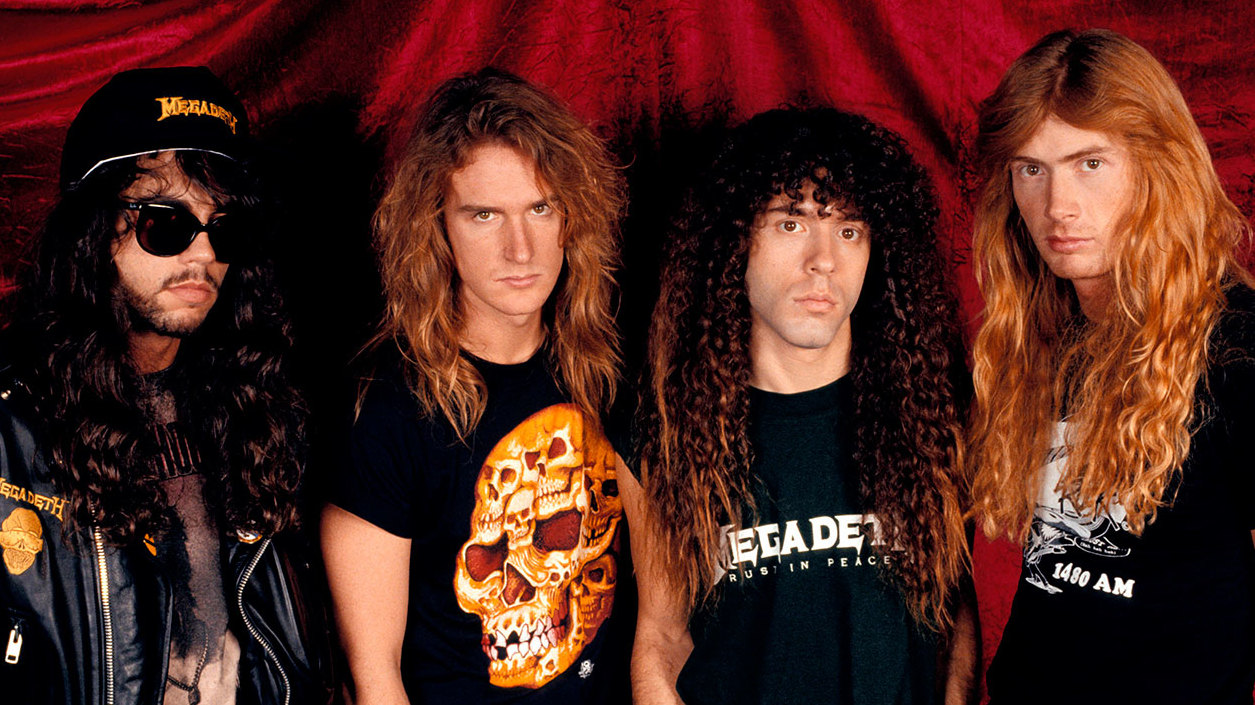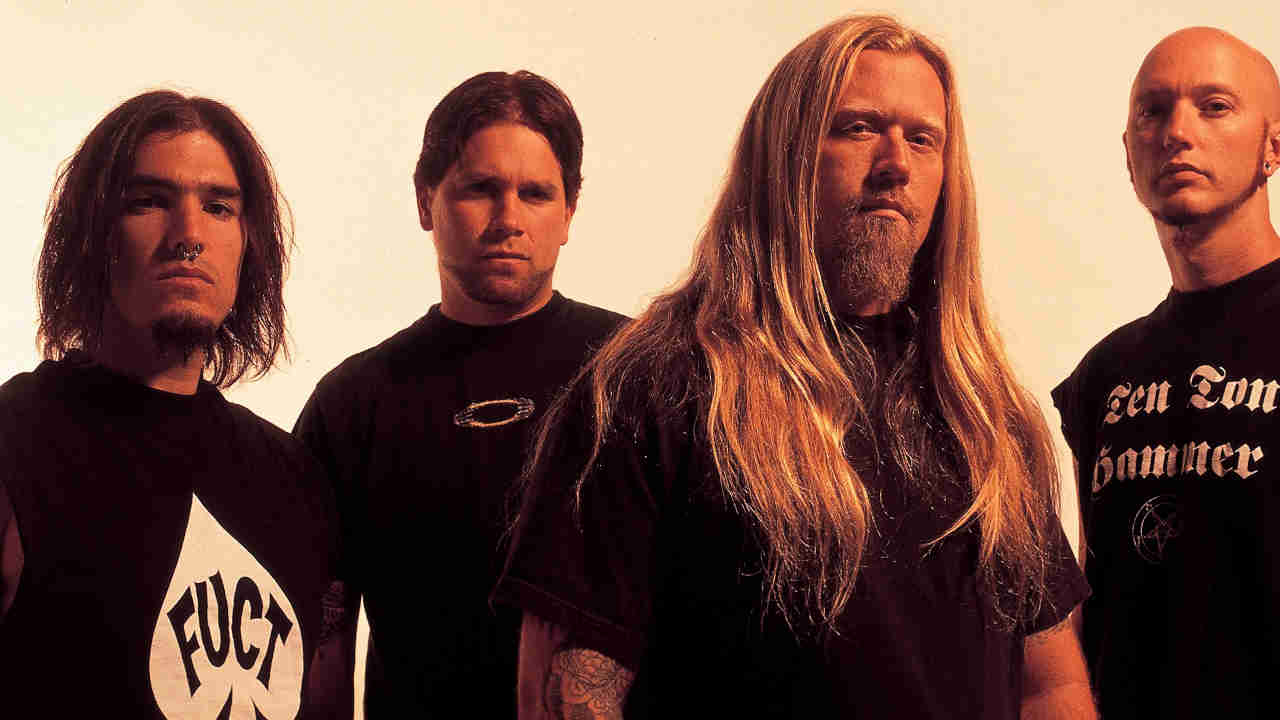The Top 10 Essential 90s Metal Albums
Whoever said metal suffered at the hands of grunge in the 1990s was deluded. As these 10 albums prove, it was stronger than ever during that turbulent decade

If you believe received wisdom, then the 1990s was the year that metal died. Grunge and pop-punk killed off the old guard, and the new wave of pure metal bands struggled to match past glories.
Bullshit. Metal was far from finished in the 90s. For some bands, it was a matter of carrying on, impervious to trends. For others, it was a case of seeing which way the winds of change were blowing and trimming their sales accordingly.
Like any living organism, metal evolved in the 90s. Bands such as Pantera and Machine Head took the thrash blueprint and added guts and groove. Others – namely the host of Satanic-themed bands emerging from the snowy wastes and dark forests of Scandinavia – simply turned up the extremity, ushering in the black metal movement. Yet others still began to experiment with the form, whether that was Brazil’s Sepultura experimenting with tribal sounds or Britain’s Paradise Lost layering a gothic approach on top of their original death metal blueprint.
Rather than the decade where metal died, the 90s was a time when the genre opened up its padlocked gates to new sounds and new visions. It’s past was assured. But now it had a future too.
Megadeth – Rust In Peace (1990)
The album that introduced what many regard as Megadeth’s classic line-up, with guitarist Marty Friedman and drummer Nick Menza joining mainstays Dave Mustaine and David Ellefsen. The presence of the pair undoubtedly helped steer Megadeth away from the razor-edged thrash with which they’d made their name and towards something more complex and progressive. This newfound musical complexity came welded to lyrics that were simulataneously thoughtful and angry, with the newly-sober Mustaine never sounding so clear-headed. With at least two stone cold metal classics up its sleeve in the shape of Holy Wars – The Punishment Due and Hangar 18, Rust In Peace took Megadeth out of the thrash ghetto and into the mainstream.
Pantera – A Vulgar Display Of Power (1992)
Pantera’s first album of the 1990s, Cowboys From Hell, may have heralded the arrival of a major force, but A Vulgar Display Of Power remains the band’s finest moment, setting up the Texans as the natural succesors to Metallica. Every song breathed menace and pungent fumes, with Mouth For War, Walk and Fucking Hostile lodged firmly among the greatest anthems of the era.
In many ways this album is the bridge between 80s thrash and nu-metal. Did the late Dimebag Darrell ever play more storming guitar than he did here? Has Phil Anselmo ever roared with greater impact? No and no.
Sign up below to get the latest from Metal Hammer, plus exclusive special offers, direct to your inbox!
Anthrax – The Sound Of White Noise (1993)
Anthrax had made their impact as innovators in the 80s, but were sounding dated by the time vocalist Joey Belladonna was fired in 1991. Desperate for some renewed cred, they brought in Armored Saint’s John Bush as his replacement. And, against all the odds, came up with one of the strongest albums of their career. Modern, cohesive, brutal yet melodic, and stuffed with strong songs – Only, Room For One More, Black Lodge, Hy Pro Glo – it was the start of a glorious new era. Anthrax were the only one of the Big Four who truly adapted to the demands of the new decade.
Voivod – The Outer Limits (1993)
No messing here. Canadian prog-metal pioneers took a further turn towards warp-factor psychedelia on this, the album that finally convinced sceptics that Voivod were among the most forward-thinking bands on the planet.
While their cover of The Nile Song underscored the Pink Floyd influence, the band relished their experimental metal on equally good songs like Fix My Heart and Moonbeam Rider. Far removed from the thrash turbulence that marked their formative years, The Outer Limits became one of the most influential metal-related records of the time.
Machine Head – Burn My Eyes (1994)
Just when it seemed that thrash was never going to regenerate, along came Robb Flynn and co, not only reviving memories of past thrash glories but also throwing down the gauntlet to those who believed this sort of thing to be passé and pasty.
The band set a blistering pace with Old, Davidian and I’m Your God Now – one that even they themselves found tough to maintain as the decade wore down their focus. But for that brief flicker in 1994 this was state-of-the-art metal, and it marked out Machine Head as one of the most crucial bands of the 90s. It still blisters the mind.
Cradle Of Filth – The Principle Of Evil Made Flesh (1994)
The debut album from the prime movers in the British scene, The Principle Of Evil Made Flesh immediately put Cradle Of Filth among the vanguard of the growing black metal breed. It might sound ultra-primitive, and even a little clichéd, these days, but the band were already showing a musical boldness that was to lead to even greater heights. The Forest Whispers My Name and The Black Goddess Rises were early Cradle classics, as the band combined a snarling, dark rasp with some surprising melodic touches. The Filth went on to achieve higher acknowledgement, and display more musical conviction, but they never matched the malevolent energy of this.
Slayer – Divine Intervention (1994)
The first Slayer album in four years, and their first since Seasons In The Abyss. And even if it didn’t have the impact Reign In Blood or South Of Heaven, that shouldn’t detract from the fact that the band were still more than capable of stomping most of the young pretenders into dust. The high pace of Killing Fields and Sex, Murder, Art are matched by the more considered approach of Dittohead. This was Slayer chained to the past, yet stretching out towards a more varied, dare one say mature, future. The best album from the band during a particularly patchy decade.
- The 10 Most Malevolent Black Metal Logo Memes
- Interview: Gene Simmons on Bob Dylan, Eddie Van Halen and Donald Trump
- The 10 most underrated UK punk albums of all time
- Metallica's Hetfield and Ulrich recall ‘awkward’ first meeting
At The Gates – Slaughter Of The Soul (1995)
Many regard this album as one of the main reasons why Euro underground metal enjoyed a glorious period in the 1990s. The combination of ultra-heavy riffs and grinding rhythms gave these Swedes a vicious, viscous intensity that drove tracks like Under A Serpent Sun, Suicide Nation, Nausea and the title track.
Today, Slaughter Of The Soul is held up as one of the most crucial influences on the renaissance enjoyed by extreme metal over the past few years. The twin guitars amid sheer velocity has proved to be a benchmark for the likes of Lamb Of God. If Europe has its own Reign In Blood, then this it.
Paradise Lost – Draconian Times (1995)
The point where modern goth metal found its feet, with the Yorkshire band tearing up the rule book, and in the process creating a style that matched extreme metal with a darkness that was more inspired by goth-related atmospherics than by horror movies. The band’s genius lay in allowing their development to take flight. Nothing here is forced, it all sound like their next evolutionary stage. The Last Time and Forever Failure probably sound so familiar today because so many other bands have copied the blueprint over the last decade. But you never beat originals, and Paradise Lost were in a league of their own in 1995.
Sepultura – Roots (1996)
Brazil’s favourite sons had always been prepared to try new ideas, and here they found their true voice with a record that took as much from the indigenous tribal rhythms of their home country as it did from extreme metal. And the result was stunning. Songs like Roots, Bloody Roots, Breed Apart and Ratamahatta are among the best examples of how the band took metal into exotic new areas. It’s a shame that Max Cavalera left the band before this pioneering work came to fruition. Still, Roots is an album of such diversity, range and acuity that it is possibly the most challenging and satisfying metal release of the decade.
Malcolm Dome had an illustrious and celebrated career which stretched back to working for Record Mirror magazine in the late 70s and Metal Fury in the early 80s before joining Kerrang! at its launch in 1981. His first book, Encyclopedia Metallica, published in 1981, may have been the inspiration for the name of a certain band formed that same year. Dome is also credited with inventing the term "thrash metal" while writing about the Anthrax song Metal Thrashing Mad in 1984. With the launch of Classic Rock magazine in 1998 he became involved with that title, sister magazine Metal Hammer, and was a contributor to Prog magazine since its inception in 2009. He died in 2021.

